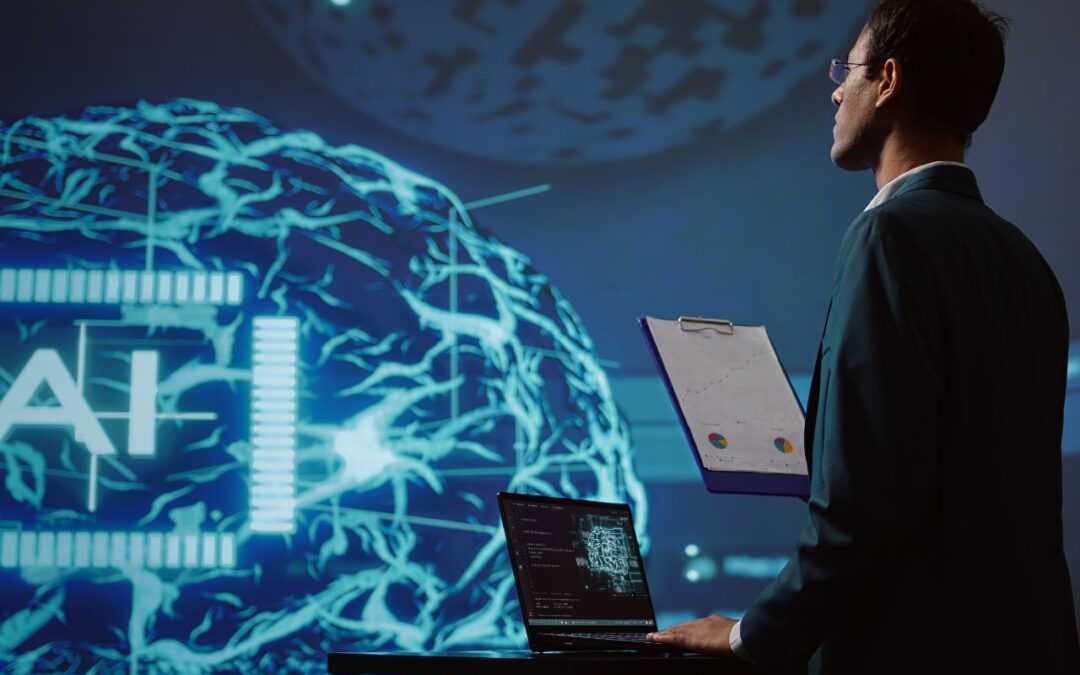In today’s fast-paced digital world, Artificial Intelligence is shaping every aspect of our lives. There are several aspects of AI in use, and Generative AI is one of the most prominent ones. Generative AI is revolutionizing all areas of our lives, from personal to professional. One of its major impacts can be seen in the Software industry.
Companies are now using GenAI for all of their operations, from Software Development to Quality Assurance. They want software to be delivered fast without compromising its quality. Testers are using GenAI heavily to delegate their routine tasks through automation. Generative AI is helping companies to reduce testing time while uncovering the issues that would have been missed by manual testing.
While it may appear just a technological advancement in testing, from a broader look, GenAI has a large impact on business as well. This article specifically explores the impact of QA through GenAI on business.
Understanding Generative AI in QA
Generative AI, as the term suggests, is an AI technology that is used for creating new content. This content can be anything, from text to images, software code to test cases, or data.
Traditional automation tools were dependent on pre-written code to generate test cases and execute them. But GenAI can generate the test cases on its own based on its analysis of application context, natural language commands, and relationship inferences of datasets. Its core features are:
- Generating Test Cases: Generative AI can generate test cases through simple instructions in natural language or by analyzing the application’s description that you can provide.
- Creating Synthetic Data: Data is the most important element of testing when there is a huge complexity involved in the functionality. Using real-life data can pose challenges related to privacy. Generative AI can generate test data that is almost real and good enough to be used for testing.
- Detecting Errors: Although the errors can be caught by testers through manual inspection after running a test case, a few minor defects often escape the human eye. But GenAI can easily catch and highlight them for the tester.
- Suggest Fixes: Generative AI is not just capable of detecting errors but even suggesting fixes for them.
There are several testing platforms that use Generative AI for QA testing. The result is higher efficiency, faster testing time, and impeccable accuracy.
Key Business Impact of Using GenAI for QA
Although the technical impact of GenAI on QA is quite popular, it has its prominent impact on the business side as well.
Faster Release Cycle
In today’s competitive environment, products are always upgrading to meet the latest customer expectations. They compete closely with each other for an inclusion of just one feature may fetch more customers. They need to constantly monitor customer needs and keep upgrading the product accordingly. With such frequent changes, testing must be done quickly.
If testing takes long or is insufficient, the company may lose customers. GenAI accelerates the release cycle by quickly finishing the testing phase. In a modern agile environment, where continuous testing is expected, GenAI fits perfectly well. It can be embedded in your CI/CD pipeline, which allows you to test your software upgrades on the go.
Cost and Resource Optimization
GenAI in QA is mostly about automating your testing process. Most of the time, companies spend around 30 to 40% of their budget on testing. But through GenAI, they can significantly reduce this cost. By lesser manual involvement in testing, GenAI facilitates generating test cases automatically.
Companies can save a lot of money by spending less on manual testers’ working hours. The manual resource optimization can be achieved by freeing them up from routine testing tasks and allowing them to focus on exploratory testing and strategic initiatives. Additionally, GenAI can catch bugs much earlier than manually. It is already known that a bug caught earlier can save a lot of expenses as compared to when it is found in production.
The reason is simple: the earlier a bug is detected, the fewer the code changes required. Production bugs can not only increase your fixing time and cost, but may also impact your customer experience, which can be detrimental to your business.
Enhanced Customer Experience and Product Quality
Manual testing has its own limits for the test coverage. When it comes to testing hundreds of scenarios, manual testing falls short. But GenAI allows you to cover all the test scenarios that manual testing may overlook. The wider the coverage, the more robust a product becomes. It can perform both positive and negative testing to check the performance of the products in ideal as well as adverse conditions.
Its predictive analytics feature takes the testing to a whole new level. Through this, the system can forecast future bugs that are most likely to occur in real-time. By mitigating all the risks, the company can not only deliver a high-quality product but also enhance customer experience through flawless performance without even the slightest glitch.
Closing Statement
Generative AI is not that different from how human intelligence works. We learn, adapt, and grow. Similarly, a GenAI testing tool, once integrated with the software development process, keeps adapting to the growing needs of the software. Test cases, once prepared, need not be updated with every software update.
They can be used again and again, mostly during regression testing when the existing functionality needs to be verified after every upgrade. In the future, the human-machine interaction will become so seamless that testers can generate test cases through voice commands as well. The core functionality would still work on Generative AI; just the input mechanism would be enhanced and integrated with it.
With so many advanced features, GenAI is making a huge impact on the business. It not only saves the testing cost and time, but also makes a large difference in the customer experience. The customers of the future will almost have zero tolerance for any system defects, and the only way to achieve that would be through GenAI on Software Quality Assurance.






